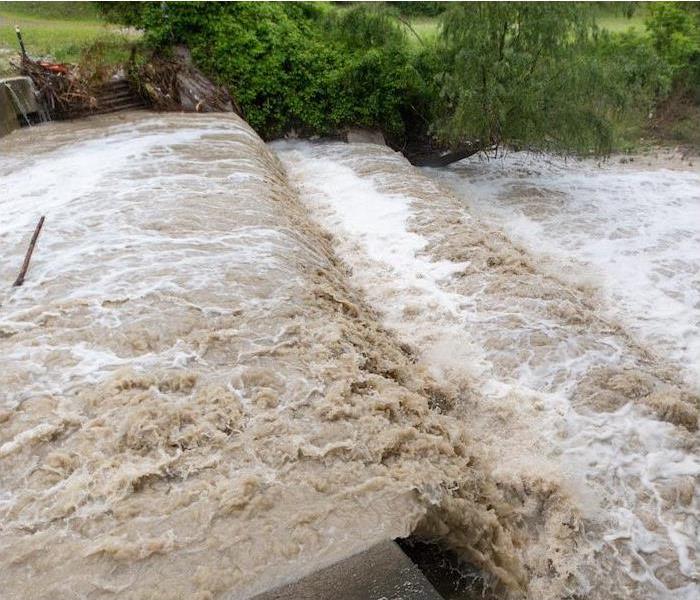What Causes Flash Flooding? | SERVPRO® of The Lower Shore
9/20/2021 (Permalink)
Did you know that flash floods are the leading cause of weather-related deaths in the United States? Due in part to their unpredictability and also in part to the fact that humans are sometimes cavalier about their risk, this statistic proves that we may need some further education about one of nature’s most common weather threats.
Flooding in a general sense is the overflow of water onto normally dry land, and typical river or stream flooding is a more long-term occurrence that may last days or weeks.
Flash flooding, on the other hand, arises quickly, over the course of a few hours or even less. Flash floods are more prone to create the heavy, rushing sub streams that take over neighborhood streets and wash entire roads or bridges away.
These kinds of floods can have varying causes, such as:
Intense rainfall. Most obviously, heavy rains that either move slowly or come to rest over an area can cause flash floods. Similarly, repeated storms over short periods in the same area can overwhelm streams and nearby waterways, even hours after rainfall has ended.
Soil considerations. Different types of soil have varying capacities for retaining and soaking up rainfall. Sand, for example, can absorb water more readily than silt or clay. It stands to reason that saturated soil that reaches its maximum absorption level would then cause runoff and flooding to occur, but it’s also true that dry, thin areas of soil can be overwhelmed by rapid rainfall, which means certain areas are prone to flash floods even in drought conditions because of their soil type.
Urban growth. You might not have considered this, but larger cities experience flooding in downtown areas where everything is pavement and concrete, because these materials don’t soak up nearly the amount of rain that soil would. This is why flash flooding in urban areas is particularly dangerous—until the water finds an outlet, it’s unlikely to be slowed by gradual ground absorption.
Snowmelt and ice jams. In areas that experience long or heavy freezes, deeply packed snow and ice can be melted by springtime rains, which can produce flash flooding. Ice jams occur when frozen areas of rivers and streams melt with rain and jam up against bridges or other structures, causing water to rise behind them. If the water is suddenly freed, it can cause flash flooding as it overwhelms the stream’s capacity.
Structure failures. Dams, levees and other structures designed to hold back bodies of water do develop issues from time to time, such as the respective failures of the Lake Needwood and St Mary’s Lake dams in 2006 and 2011. Heavy rains and losses of integrity can cause rampant, rapid flooding over entire areas.
If flooding has invaded your home or property, we’re here to get you back in the dry. Contact SERVPRO today to get a local emergency team onsite right away.




 24/7 Emergency Service
24/7 Emergency Service